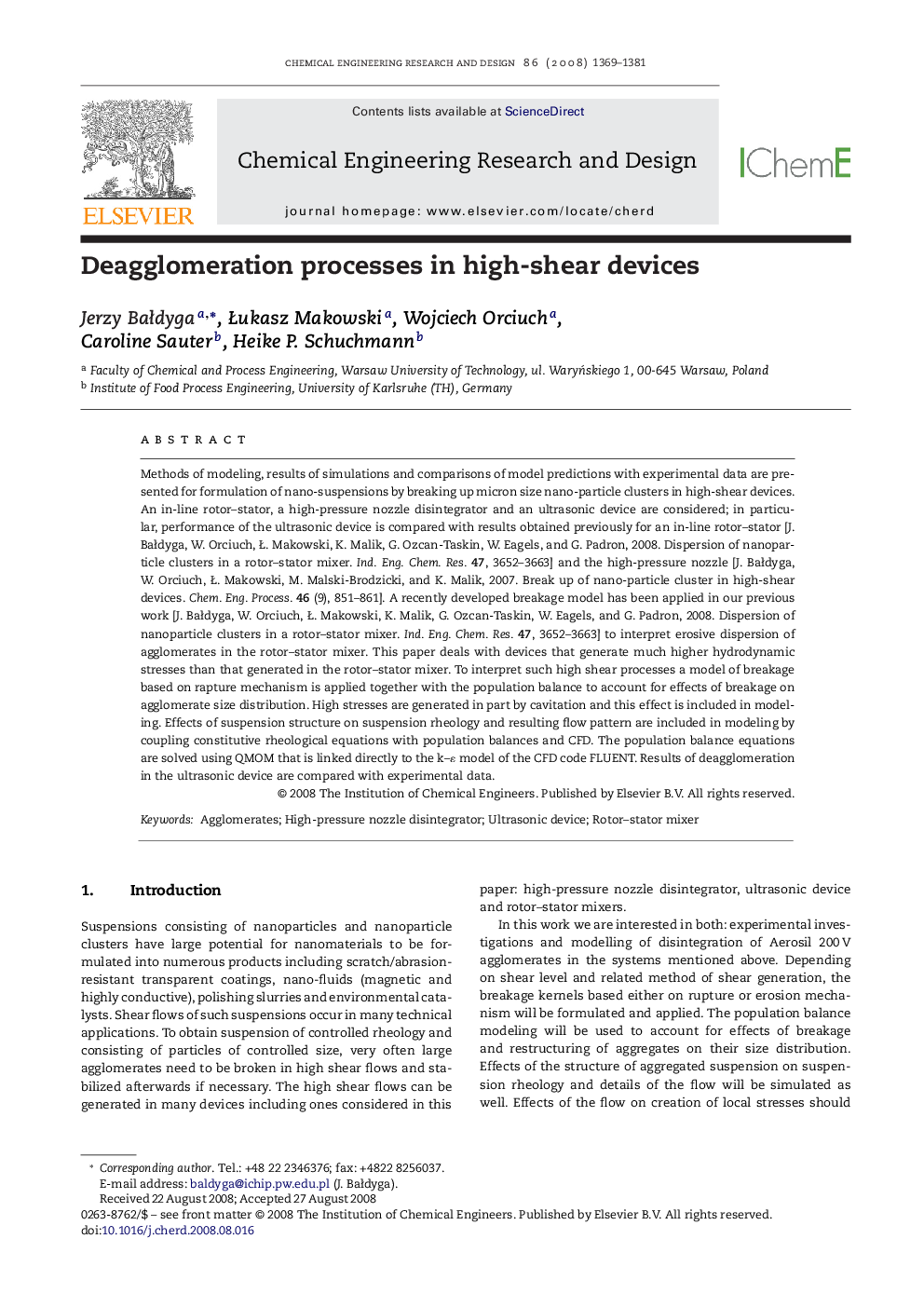| Article ID | Journal | Published Year | Pages | File Type |
|---|---|---|---|---|
| 621336 | Chemical Engineering Research and Design | 2008 | 13 Pages |
Methods of modeling, results of simulations and comparisons of model predictions with experimental data are presented for formulation of nano-suspensions by breaking up micron size nano-particle clusters in high-shear devices. An in-line rotor–stator, a high-pressure nozzle disintegrator and an ultrasonic device are considered; in particular, performance of the ultrasonic device is compared with results obtained previously for an in-line rotor–stator [J. Bałdyga, W. Orciuch, Ł. Makowski, K. Malik, G. Ozcan-Taskin, W. Eagels, and G. Padron, 2008. Dispersion of nanoparticle clusters in a rotor–stator mixer. Ind. Eng. Chem. Res.47, 3652–3663] and the high-pressure nozzle [J. Bałdyga, W. Orciuch, Ł. Makowski, M. Malski-Brodzicki, and K. Malik, 2007. Break up of nano-particle cluster in high-shear devices. Chem. Eng. Process.46 (9), 851–861]. A recently developed breakage model has been applied in our previous work [J. Bałdyga, W. Orciuch, Ł. Makowski, K. Malik, G. Ozcan-Taskin, W. Eagels, and G. Padron, 2008. Dispersion of nanoparticle clusters in a rotor–stator mixer. Ind. Eng. Chem. Res.47, 3652–3663] to interpret erosive dispersion of agglomerates in the rotor–stator mixer. This paper deals with devices that generate much higher hydrodynamic stresses than that generated in the rotor–stator mixer. To interpret such high shear processes a model of breakage based on rapture mechanism is applied together with the population balance to account for effects of breakage on agglomerate size distribution. High stresses are generated in part by cavitation and this effect is included in modeling. Effects of suspension structure on suspension rheology and resulting flow pattern are included in modeling by coupling constitutive rheological equations with population balances and CFD. The population balance equations are solved using QMOM that is linked directly to the k–ɛ model of the CFD code FLUENT. Results of deagglomeration in the ultrasonic device are compared with experimental data.
